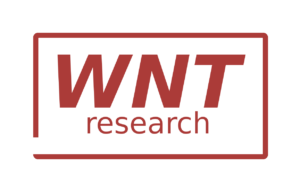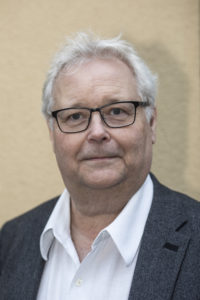
WntResearch starts 2020 with study approval in Hungary
Malmö-based WntResearch is developing a new type of cancer drug that will inhibit the spread of metastases and thus increase the chances of survival for cancer patients. Currently, the majority of cancer deaths are caused by metastases, but despite this, there are no effective treatments to reduce the risk of metastatic cancer.
WntResearch wants to change this with Foxy-5, a proprietary injectable synthetic copy of a specific portion of the WNT5A protein. High levels of WNT5A mean that a cancer cell is less mobile and does not detach from the tissue as easily as otherwise, which reduces the risk of metastases. The goal is to reduce the ability of the cancer cells to break away from the mother tumour by adding Foxy-5.
Focus on Foxy-5
In the year-end report for 2019, CEO Peter Morsing emphasises that during Q4, WntResearch’s focus was on the ongoing Phase II study with Foxy-5. WntResearch has also conducted preclinical studies in psoriasis with the candidate Box-5. However, after analysing the results, the company decided not to proceed with this project, and instead devote its resources to the ongoing phase II study with Foxy-5.
Phase II studies in Spain
The Phase II study was initiated in Spain in April 2019 after Foxy-5 had previously shown strong safety data and few side effects in the Phase I and Ib studies. The plan going forward is to examine the candidate’s capacity to reduce the risk of metastases and relapse in patients with colon cancer. In these patients, the cancer spreads in 40 – 50 per cent of cases, which means that it is a group that really could benefit from a drug like Foxy-5.
risk of metastases and relapse in patients with colon cancer. In these patients, the cancer spreads in 40 – 50 per cent of cases, which means that it is a group that really could benefit from a drug like Foxy-5.
Initially, the patient recruitment in the study was somewhat slower than expected, and in order to accelerate the recruitment, WntResearch applied to increase the number of participating clinics. This application was approved by the Spanish authorities, and the study was expanded with seven new clinics. Thus, 17 clinics in Spain are now included in the study and the majority of the patients have been recruited.
Important for Foxy-5
Yet another positive announcement came in November when the twentieth Spanish patient was included in the study. This was important as the number of patients required to make a safety assessment of Foxy-5 administration to patients, was then reached. During the final month of the year, the analysis was completed with a positive outcome, and the company could continue the study as planned. The fact that it has been established that the administration is safe is very important and will, according to the company, facilitate patient recruitment and further strengthen the confidence of the treating doctors.
Need for speed
A few months after the study was started in Spain, WntResearch wanted to increase the pace of the study and, in August, Hungary was added as an additional country where to perform the study. However, the road to approval in Hungary has not been straightforward. In December, the Hungarian authorities asked WntResearch to submit a renewed application as the Ethics Committee had questions about the study protocol that the company needed to address. As a result, the start of study was delayed by two months.
Positive message from Hungary
It is this renewed application that the Hungarian authorities now have processed and decided to approve after a positive assessment of WntResearch’s clarification regarding the study protocol.
Strengthened with this approval, WntResearch can now take the next steps towards launching studies in Hungary. As the processing of the application actually went faster than expected, the company’s Hungarian contract research organisation Optimapharm has intensified its work signing contracts with the twelve clinics to be included in the study. The company’s goal is to be able to activate the first Hungarian clinics during this month (February).
BioStock has spoken with Peter Morsing, CEO of WntResearch, to learn more.
Peter Morsing, first and foremost, congratulations on the study approval in Hungary! Can you tell us a little about the work behind the approval?
– The announcement from the Hungarian authorities at the end of last year was very unexpected as the rejection came without being preceded by questions on the study protocol. The reasons for the rejection were, as we saw it, mainly based on misunderstandings that could easily have been addressed in a response from us, but the rules require a new application.

– We made a clarification in the protocol and therefore sent in a new application with a cover letter where we referred to the pages of the protocol where they had concerns. Since the questions were easy to answer, this did not entail much extra work, but rather mostly consisted of discussions with our Hungarian CRO to ensure that the material was correctly translated from English.
Intensive work is now underway to contract clinics for the study. What information can you provide our readers with regarding the clinics that will be included in the study?
– There are a large number of clinics in Hungary and among these there are those with a great deal of experience and proven capacity to follow their forecasts. We have done a lot of preliminary work and selected the ones that we consider to be the 12 best clinics to carry out our study.
Your goal is to quickly activate the Hungarian clinics. What additional steps remain before you can start the study?
– The activation of the Hungarian clinics occurs when the contracts are signed. The time to agree on the contract text varies from clinic to clinic as each clinic has its own view of what should be included. When all parties have agreed, Optimapharm signs a contract in which they guarantee that the Hungarian text is in accordance with the English text. After my own signature is added, it goes back to the clinics for the final signatures. I use the plural because in many cases it is up to 4-5 different people who will sign. To speed up this part, Optimapharm actually goes to the clinics with the contract in hand to get the signatures. The first contract is already signed by me and the remainder will be coming in a steady flow going forward.
– When all signatures are in place, a so-called site initiation visit (SIV) is made as Optimapharm goes through the entire protocol and informs the staff regarding the included parts. The clinic is then activated, and study drugs are sent there. This process is a little different at different clinics. For about half of the clinics, SIV has already been provisionally planned so that it can be done in close connection with a completed contract, while other clinics require that the contracts are written before this planning can take place. This process can take anywhere from a week to, at worst, a month, but no longer. SIV is therefore critical for activation.
»The goal is to start the study in Hungary quickly and efficiently so that patients can be included in the study, with the objective of activating all clinics before the end of March. Once Hungary is up and running, 27 active clinics will be actively looking for suitable candidates for our study.« – Peter Morsing, CEO of WntResearch
What does the study timeline look like?
– That we would be rejected in Hungary was very unexpected, while the fact that we were approved a month before schedule in the second round was something that we might have hoped for but not expected. The fact that we have increased the pace of patient recruitment significantly in Spain, can only be interpreted as us having had a good recruitment pace during this period (as well as having a period of many new patients in the early autumn).
– A clinical study is not the same as planning the delivery of e.g. a truck; we are completely dependent on there being patients who have the right diagnosis, at the right clinic and who are also willing to participate in our study. Our work is entirely focused on providing the materials and resources required with high efficiency when patients are available. But we cannot control the patients.
– The goal is to start the study in Hungary quickly and efficiently so that patients can be included in the study, with the objective of activating all clinics before the end of March. Once Hungary is up and running, 27 active clinics will be actively looking for suitable candidates for our study.
You also have an ongoing phase II study in Spain where patient recruitment has been somewhat slower than you hoped for. What is the current status there?
– 37 patients are now included in Spain and all the clinics are screening for patients. I have visited the doctors at the clinics repeatedly, most recently last week, to emphasise our commitment. We continuously evaluate how well the clinics work and we have closed down non-productive clinics to concentrate on the clinics that deliver.
– Our CRO, SMS-Oncology, make regular visits and call the clinics to ensure that the study is highly prioritised on their agendas. Since December, the recruitment pace has increased, and we hope that this will continue.
In your report you mention that you have prepared the first evaluation of the risk level and WNT5A expression for spring 2020. What does this mean for the study?
– The rejection in Hungary meant that the safety margin for having a sufficient number of evaluable patients in the summer of 2020 was more or less was eliminated.
– To explain this in more detail; not all patients included in the study necessarily meet the criteria that are set for them to be included in the statistical evaluation of our primary efficacy variable (circulating tumour DNA). To optimise our analysis, we are looking for patients with a high risk of relapse (over 30 per cent) and who also have a low expression of WNT5A. Our basic hypothesis is that patients with low WNT5A in their primary tumour are at risk of relapse and it is this deficiency that we strive to counter with Foxy-5. By ”enriching” the patient material in this way, we optimise the study with patients with a historically high risk of relapse within a fairly short period of time.
– In previous studies, we have seen that the group of patients that is included in our study – in about 70 per cent of the cases – have a low level of WNT5A. Since we were unable to include enough patients last year to give us a good safety margin, we need to initiate the analysis of WNT5A in the tumour of the patients earlier. This will be done in order to see if our basic hypothesis is correct, and so that we can have enough patients for a good analysis of ctDNA this summer.
»We are alone in trying to make sure that the metastatic process is completely prevented, i.e. ensuring that cells do not leave the primary tumour at all.« – Peter Morsing
You have terminated your project in psoriasis, but you are still doing preclinical development where Foxy-5 is combined with checkpoint inhibitors. Can you guide us through this?
– A couple of years ago a study was conducted in collaboration with the University of Copenhagen to see if there was any risk with combining checkpoint inhibitors with Foxy-5, as these are becoming more common. The preclinical data from that study clearly showed that there was no adverse effect on the treatment effect when adding Foxy-5.
– In this study, however, a very interesting trend was seen, namely that Foxy-5 actually made these inhibitors more effective, although the data did not differ significantly. Tommy Andersson’s research team then wanted to see if this could be explained at a cellular level and, without going into details, this was the case and a patent application was filed. Due to these results, a new study was carried out in collaboration with the University of Copenhagen with a larger material to see if the trend found earlier was significant.
– This was not the case in this study, which, however, differed somewhat from the original study design. It is known that different tumour types, but also different cells of the same tumour type may have more or less checkpoint molecules present. To move ahead with this very interesting track and to increase our understanding of this possible combination, we are now working with a clinical research group in Dublin that has a large number of different tumour cells in its arsenal.
Can you finally tell us a bit about what in your opinion makes Foxy-5 unique in comparison to other ongoing similar projects where metastases are in focus?
– First of all, there are not many ongoing projects addressing metastases, we only know of two other projects. We are alone in trying to make sure that the metastatic process is completely prevented, i.e. ensuring that cells do not leave the primary tumour at all. As far as I understand the other projects attack cells that have already left the tumour.
The content of BioStock’s news and analyses is independent but the work of BioStock is to a certain degree financed by life science companies. The above article concerns a company from which BioStock has received financing.


